PROTECT YOUR DNA WITH QUANTUM TECHNOLOGY
Orgo-Life the new way to the future Advertising by AdpathwayLaurel Canyon nestles in the Hollywood Hills, between the Sunset Strip and Studio City. In this episode I review the book Weird Scenes Inside the Canyon: Laurel Canyon, Covert Ops & The Dark Heart Of The Hippie Dream by Dave McGowan. We look at his central theory – that the hippy rock n roll scene was manufactured by the US government – fact check some of his claims, especially concerning the Lookout Mountain Laboratory, and discuss the important context that McGowan’s work overlooks.
Podcast: Play in new window | Download | Embed
David McGowan’s Weird Scenes Inside the Canyon should be considered a classic of conspiracy theory literature. That is not to say it’s a good book, simply that the theory it espouses has become quite popular, and widely believed. Personally, I find the book moronic and baseless, the theory meandering and vague, and in my view it is written in such a condescendingly smug manner it may as well have been authored by Ann Coulter.
Nonetheless, in the realm of so-called alternative investigations into the origins of pop culture it’s right up there with speculations about the Tavistock Institute creating the Beatles – it latches onto something that is popular, and hence becomes popular itself. This is what McGowan set out to do, and what he accomplished – to leech off people far more talented than himself.
The proof that McGowan was nothing more than a grifter came in the wake of the Boston Marathon Bombing. A few months earlier, the Sandy Hook school shooting was widely interpreted by the conspiracy culture to be ‘staged’ – a word that means absolutely nothing without definitions and context, but which in this context either means some kind of disguised attack carried out by other perpetrators or a false event using crisis actors to play victims and so on. While the crisis actor theory had been knocking around for some time prior to Sandy Hook, this was the moment where it became the norm, the default response to any violence that draws large amounts of mass media attention.
That was in late 2012, and in spring 2013 we got the Boston bombing at the finish line of the marathon. Without the slightest evidence McGowan and many others claimed that all the victims were crisis actors, there was no bomb, no one was injured or killed and the whole thing was ‘staged’. To this day I’ve waited for people to present actual evidence (not nitpicking over the behaviour of emergency workers responding to the bombing) that might substantiate this theory, but no one has. No one did it with 9/11, or 7/7, or Mumbai, or Sandy Hook or Boston. Despite this, further attacks in France, Belgium, the UK and elsewhere have been branded in the same fashion by the same people. Ditto incidents during the war in Syria, whether gas attacks or otherwise.
The simple truth is that it’s easy to declare anything is fake or staged, and virtually impossible to disprove. That is to say, the crisis actor/media fakery conspiracy theory is unfalsifiable – there is literally no evidence that its proponents would accept as proof that the event did take place, and that these people really suffered injuries or death. There is no way to falsify this particular theory, unlike with other conspiracy theories that I find much more credible. It cannot be tested, cannot be proven or disproven, and hence it is replicated by the gullible and the credulous.
The most logical counter-argument to this theory – and it’s one I’ve made before – is why would anyone bother? If you’re going to carry out a covert operation to try to fool the world into thinking someone blew up the Boston marathon and killed a small number of people and injured dozens, why not just blow it up for real and blame the patsies? That’s happened enough times for it to always be a plausible response to an unfolding news story of this kind.
But hiring dozens of actors to either fake injury or go on the news and say they say this or heard that adds massively to the risk of exposure, without adding any strategic advantage to the true conspirators. It’s like conspiring to rob a bank and instead of keeping it between the four bank robbers you decide to hire an extra two dozen people to perform street magic outside the front of the bank for an hour before you turn up. It makes the conspiracy larger, makes operational secrecy far harder to maintain and, if anything, makes the bank robbery more difficult to pull off and get away with.
In our hyperreal age where people struggle to distinguish between reality, mediated reality and media fakery, the basic skills necessary to make such distinctions are absent from a lot of people’s minds. Furthermore, for a generation who grew up in a media saturated culture, who experience almost everything through mediated reality, it can seem like the media is more important than the event itself. Hence, the event is fake, what really matters is exposing the fakery of the media management. Because it’s far easier, takes less time, requires far less mental skill or effort or patience than tracking the movements, actions and relationships of the alleged bombers in the years prior to the bombing.
Why does this matter? After all, McGowan and Bartlett and Beeley and others who’ve promoted this theory and this kneejerk approach to media depicting violence are simply noisy fuckwits, why in the hell should anyone care that they’re talking utter balderdash?
The number one reason is that it turns real victims into props who are not only unworthy of empathy or compassion but who are active conspirators, i.e. the enemy. Take the victims of any of the actual gas attacks or bombings in Syria perpetrated by Assad’s military. According to the Western conspiracy media every single one of these events was staged by the White Helmets using crisis actors, and there are no victims, and it’s all faked and made up in order to win support for NATO’s campaign against Assad. The fact that the two people who have promoted this theory have never explained who funded their trips to Syria, nor openly talked about being protected by that selfsame Assadist military while in the country, and one of them even endorsed torture, as long as the victim of torture was opposed to the Assad government – all of this should have given everyone pause for thought, but it didn’t.
In short, the proponents of the crisis actor theory are nothing but parasites, just like the mainstream media they claim they are opposed to, or at least claim they are an alternative to. Bomb goes off, mainstream media turns up and tries to get some nice, gor y footage to splash all over the news. People watching the news on the internet claim that someone’s blood isn’t the right colour, declare they are a crisis actor and it’s all staged or faked. No one is actually doing anything good here, and so people like McGowan are nothing other than cynical, exploitative hacks who lack empathy for other human beings.
Contrasting this, everyone I know who has ever spoken to or corresponded with McGowan says he was quite a charming, seemingly friendly guy. Charming, and lacking in empathy. It doesn’t take an intimate knowledge of the Diagnostic and Statistical Manual to deduce exactly what sort of person we’re dealing with here.
So, the rest of this episode is going to be devoted to a critical review of arguably McGowan’s most famous work – Weird Scenes Inside the Canyon. I’ve wanted to do this ever since I first picked up a copy, and a listener recently got in touch to talk about the book and it annoyed me enough to finally dust off my notes and make this podcast for you to consider.
Weird Scenes Inside Laurel Canyon
This is one of those topics where it is difficult to know where to start because both the truth and McGowan’s delusions go off in many directions, so let’s start with an example.
The basis thesis of Weird Scenes is that many of the major figures in the Laurel Canyon scene in the mid-late 60s and into the 70s had ‘ties to the military-industrial complex’. Leaving aside the vagueness of that premise I want to cite a specific example to illustrate just how misleading McGowan’s work truly is – that of Jim Morrison, the founder and lead singer/songwriter of The Doors and his father, Admiral George Morrison of the US Navy. As McGowan puts it:
And so it is that, even while the father is actively conspiring to fabricate an incident that will be used to massively accelerate an illegal war, the son is positioning himself to become an icon of the ‘hippie’/anti-war crowd. Nothing unusual about that, I suppose. It is, you know, a small world and all.
There are a few things to unpack here. McGowan is referring to the second Gulf of Tonkin incident, though he writes as though there was only one incident. In reality, in early August 1964 there were two incidents in the Gulf of Tonkin off the coast of North Vietnam. A group of spy ships including the USS Maddox were involved in a brief skirmish with Vietnamese patrol boats on August 2nd. Two days later, there was a second incident which President Johnson and Secretary of Defense Robert McNamara portrayed as an attack on the US Navy ships by the Vietnamese, which was used to pass the Gulf of Tonkin Resolution, formalising US involvement in the Vietnam war.
This second incident wasn’t an attack – according to James Stockdale, who was a naval aviator flying over the Gulf that night – there were no Vietnamese boats in the area. He later said that the US destroyers were ‘just shooting at phantom targets’ and ‘there was nothing out there but black water and American firepower’. A Captain on the Maddox, Capt Herrick, sent the accounts of his sailors up the chain to the Commander of the Pacific Fleet in Hawaii, but also cast doubt on whether anyone actually saw a Vietnamese patrol boat.
Where was George Morrison? He was also a captain, of the USS Bon Homme Richard, an aircraft carrier and the flagship of the First Fleet’s Fifth Carrier Division, which included the Maddox. Technically, he was in command of the Division including the ships involved in the Gulf of Tonkin incidents, but he wasn’t on board either ship. As President Johnson was interrupting TV broadcasts to announce this alleged attack, Morrison, Herrick and the other local commanders were casting doubt on whether there even was an attack. This has been widely reported, with Business Insider saying:
At the same time Morrison and his staff told Navy headquarters in Hawaii that the radar returns the destroyers had targeted were probably false returns generated by the rough seas. Headquarters relayed the information to Secretary of Defense Robert McNamara, but he failed to give those details to President Johnson.
Thus, far from actively conspiring to fabricate this second incident, a supposed attack by the Vietnamese torpedo boats on the American ships, Morrison was downplaying the incident and saying that it wasn’t clear if any Vietnamese ships attacked anyone. Simultaneously, McGowan has George’s son, Jim Morrison, ‘positioning himself’ to take a leading role in the peacenik hippy movement.
In reality, at the time of the Gulf of Tonkin incidents Jim was a film student at UCLA, and it wasn’t until a year later that he and Ray Manzarek founded The Doors. Jim wasn’t positioning himself to do anything except spent months living off ‘canned beans and LSD’, at least according to Ray.
Even if we somehow set aside these inconvenient facts and jump on board the USS McGowan and say that the Morrison family somehow conspired with the US military to help create the Laurel Canyon scene and the wider hippy movement, we have to consider some other details. Such as that by the time of the Gulf of Tonkin incidents Jim had broken off from his family, including his father, and that when George first heard The Doors’ music he wrote his estranged son a letter imploring him not to pursue a career in singing and music.
Why would McGowan wilfully ignore these easily-established facts? Why would he construct this elaborate lie that The Doors somehow existed a year earlier than they did, that the younger Morrison was somehow plotting to create the hippy movement while he was still a film student and that the older Morrison somehow conspired to fabricate an attack when he was actually a sceptic as to whether any such attack even happened? Let alone Dave’s sarcastic rhetoric that there’s ‘nothing unusual’ here, when the reality is that his theory is as baseless as the second Gulf of Tonkin incident. The only unusual thing is that McGowan is portraying a nothingburger as critical history, just like the liars in the White House and the military. Far from Jim Morrison being a product of the military-industrial complex, the actual parallel to be drawn here is between McGowan’s degree and style of deception and that of the US Navy.
Then there’s a wider point – is it that surprising that the generation who grew up in the 50s and 60s often had parents in the military? The US had been involved in two World Wars, and a great many people were part of that. George Morrison, just for example, witnessed the attack on Pearl Harbor at the start of his military career. He did bring up his sons as military brats, disciplined them severely, so is it such a leap of imagination that one of his sons would become a hippy peacenik who made surreal prog rock music? OK, it’s the best surreal prog rock music in the world, and George was present for two major events in US military history, but McGowan conflates the problem of the second Gulf of Tonkin event never happening with some kind of wider conspiracy he never actually describes.
Weird Scenes Inside the Canyon is littered with this sort of basic factual error and decontextualising of facts in order to support the premise and central theory of the book. In Chapter Five David tries to dispel some of the criticism he had received, noting that Jim Morrison referred to his parents as ‘dead’ publicly and fairly often, meaning they were dead to him, he no longer had a relationship with them. David counters this by pointing to a photo of Jim and George Morrison on the bridge of the aircraft carrier the elder Morrison commanded. The photo was taken in January 1964, ‘just months before his emergence as a rock star’, and so, says McGowan, ‘It seems rather obvious to me that telling people that your parents are dead could be a very effective way of avoiding talking about who your father really is.’ Alternatively, Jim didn’t even meet Ray Manzarek until the summer of 1965, a year and a half later, and didn’t sign with a record label until the following year. Which leaves a lot more than a few months in between that photo and Morrison’s rise to rock stardom and public statements about his parents.
Another example from chapter one concerns John Phillips, the guy who founded The Journeymen and The Mamas and the Papas, also a major part of the Laurel Canyon-based music scene and hippy counterculture, with McGowan claiming:
The son of US Marine Corp Captain Claude Andrew Phillips and a mother who claimed to have psychic and telekinetic powers, John attended a series of elite military prep schools in the Washington, DC area, culminating in an appointment to the prestigious US Naval Academy at Annapolis.
Firstly, Claude (the father) was a Major, not a Captain, and he was in the Marines way back in WW1 and worked mostly as an engineer. The way John tells it in his autobiography, (Papa John: An Autobiography) his father never saw any combat. John himself wasn’t born until 1935, over a decade after his father had apparently left the Corps. Secondly, John didn’t attend a ‘series of military prep schools’, he attended one, which he hated. Thirdly, he lasted less than a year at Annapolis. McGowan continues:
John Phillips, of course—though surrounded throughout his life by military/intelligence personnel—did not involve himself in such matters. Or so we are to believe. Before succeeding in his musical career, however, John did seem to find himself, quite innocently of course, in some rather unusual places. One such place was Havana, Cuba, where Phillips arrived at the very height of the Cuban Revolution. For the record, Phillips has claimed that he went to Havana as nothing more than a concerned private citizen, with the intention of—you’re going to love this one—“fighting for Castro.” Because, as I mentioned earlier, a lot of folks in those days traveled abroad to thwart CIA operations before taking up residence in Laurel Canyon and joining the ‘hippie’ generation. During the two weeks or so that the Cuban Missile Crisis played out, a few years after Castro took power, Phillips found himself cooling his heels in Jacksonville, Florida—alongside the Mayport Naval Station.
First, the CIA were supportive of Castro during the Revolution against Batista in the late 50s. It was only after the Cuban Revolution that they decided Castro was a dangerous commie and had to be eliminated. Second, Phillips’ own account of his time in Havana mostly consists of getting drunk and partying with local sex workers – he never met Castro, never got involved in fighting for the revolution. McGowan quotes the phrase ‘fighting for Castro’ and cites Phillips’ autobiography in the short bibliography at the end of the book, but if you didn’t read the relevant part of the book yourself (like I did) then you’d never know the context. Through careful quote-mining McGowan makes it seem like Phillips was involved in covert operations in Havana, when in reality he was drinking rum and falling asleep in a local porno theatre.
As to the bit about living alongside the Mayport Naval Station during the Cuban Missile Crisis – which is in Jacksonville, to be fair – Phillips’ autobiography again provides useful context. At this point he was playing with his first band, the Journeymen, with Scott Mackenzie, who was born in Jacksonville. They happened to be playing gigs in the area at the time of the Missile Crisis, which they watched on TV while hanging out in a beach-front hotel. There’s nothing intelligent about this section of the book – it mostly concerns Scott having paranoid delusions about a Russian invasion due to taking too many drugs.
I imagine you’re starting to see a pattern emerging whereby McGowan twists small details, decontextualises them and then recontextualises them so as to support his conspiracy theory. It’s very much a conclusion-led process whereby he wants to find that many key figures in the Laurel Canyon scene were covert operatives or on some secret military assignment when, in reality, none of them were. Not one. At least as far as I can tell.
Let’s take another example from the opening chapter, concerning Stephen Stills, co-founder of Buffalo Springfield and Crosby, Stills, Nash and Young. McGowan claims that:
In addition, Stills will pen perhaps the first, and certainly one of the most enduring anthems of the sixties generation, For What It’s Worth, the opening lines of which appear at the top of this chapter (Stills’ follow-up single will be entitled Bluebird, which, coincidentally or not, happens to be the original codename assigned to the CIA’s MK-ULTRA program).
Note: Bluebird was not the original codename assigned to MKULTRA.
Before his arrival in Laurel Canyon, Stephen Stills was the product of yet another career military family. Raised partly in Texas, young Stephen spent large swaths of his childhood in El Salvador, Costa Rica, the Panama Canal Zone, and various other parts of Central America—alongside his father, who was, we can be fairly certain, helping to spread ‘democracy’ to the unwashed masses in that endearingly American way. As with the rest of our cast of characters, Stills was educated primarily at schools on military bases and at elite military academies. Among his contemporaries in Laurel Canyon, he was widely viewed as having an abrasive, authoritarian personality. Nothing unusual about any of that, of course, as we have already seen.
So we should simply assume that William Arthur Stills was involved in covert operations in El Salvador, Costa Rica and the Panama Canal Zone? And we should simply assume that the schools the younger Stills attended were ‘on military bases’ and ‘elite military academies’? McGowan offers no source for any of this, there are no footnotes in Weird Scenes Inside the Canyon. The only biography of Stills that he mentions, Hotel California, says nothing about his father working in covert ops or his supposedly elite military education. Stills did attend Admiral Farragut Academy, which has an obligatory Naval Science course in one year, but Stills never did that course. He left the academy while still a child and enrolled in Woodrow Wilson Junior High in Tampa which, needless to say, is not on a military base.
There is, however, an even more curious aspect to the Stephen Stills story: Stephen will later tell anyone who will sit and listen that he had served time for Uncle Sam in the jungles of Vietnam. These tales will be universally dismissed by chroniclers of the era as nothing more than drug-induced delusions. Such a thing couldn’t possibly be true, it will be claimed, since Stills arrived on the Laurel Canyon scene at the very time that the first uniformed troops began shipping out and he remained in the public eye thereafter. And it will of course be quite true that Stephen Stills could not have served with uniformed ground troops in Vietnam, but what will be ignored is the undeniable fact that the US had thousands of ‘advisers’—which is to say, CIA/Special Forces operatives—active in the country for a good many years before the arrival of the first official ground troops. What will also be ignored is that, given his background, his age, and the timeline of events, Stephen Stills not only could indeed have seen action in Vietnam, he would seem to have been a prime candidate for such an assignment. After which, of course, he could rather quickly become—stop me if you’ve heard this one before—an icon of the peace generation.
McGowan admits that he never spoke to any of these people or their associates while doing what he calls the research for Weird Scenes. So how on earth would he be in a position to know that Stephen told ‘anyone who will sit and listen’ about his supposed adventures in the jungles of Vietnam? He never sat and listened to him, and there are only two brief references to this in Hotel California, which are characterised as drug-fuelled delusions. Certainly, McGowan doesn’t cite any military records proving that Stills was ever in the military, let alone in Vietnam, let alone during the early 60s. He doesn’t cite a single eyewitness account that places Stills in Vietnam at any time. All he does is establish that it is possible these stories that Stephen told could have been true – he presents no evidence at all that they are true.
Even where McGowan gets basic facts right, he interprets them as though he knows far more than he does, and presents them as though they prove things they don’t prove. The constant wink and nudge conspiratorial rhetoric is a substitute for stating clearly and unambiguously what he thinks this all means, but it’s also a trick I’ve seen politicians use, most obviously the current president.
Back in 2015 and 2016 when Trump was first getting himself elected he talked a lot about the Wall, saying it’ll be the best wall anyone has ever seen and will do everything people want it to do. He offered no specifics, no generated imagery like they do with football stadia years before they’ve started building them, just vague words. The result is that people could imagine any wall they like, filling in the blanks with their own minds and thus believe that the wall could be all things to all people.
It’s the same with McGowan’s writing style – he avoids making specific theoretical claims but instead resorts to nudging you with his elbows and saying ‘hmmm, you see, don’t you?’. He relies on the reader filling in the blanks with their own suspicion and speculation, and hence is playing to an audience who already wants to believe that the hippy counterculture and peace movement were somehow a controlled opposition. If you don’t already believe that then you probably won’t find this book convincing. I certainly don’t.
Laurel Canyon Deaths and Dubious Arguments
Chapter Two opens by trying to make some kind of argument, stating that the people discussed in the opening chapter ‘were destined to become the spokesmen and de facto leaders of a generation of disaffected youth’. So was it destiny, or conspiracy? Was it intentional, or simply the unfolding of inevitability? He goes on ‘these icons were, to an overwhelming degree, the sons and daughters of the military/intelligence complex and the scions of families that have wielded vast wealth and power in this country for a very long time.’
So far the only intelligence agency he has mentioned is the OSS, the wartime equivalent of the CIA, who – McGowan alleges, without any evidence – were the employers of Jackson Browne’s father who – McGowan alleges, without any evidence – was ‘assigned to postwar reconstruction work in Germany’. I don’t know if Dave realises this but the OSS were shut down within a month of WW2 ending, and so it isn’t at all likely that Browne snr was working for them at that time.
Also, does your father working in postwar Germany make you a product of the military-industrial complex? Both of my grandfathers fought in WW2, and both of my grandmothers worked in some kind of intelligence role and had jigh level clearances during the war. My mother worked for the MOD for a time, decades later. Am I a product of the military-industrial/intelligence complex? Does that mean everything I’ve ever done has been controlled by the very military establishment I openly criticise? I know that it doesn’t mean that, but according to the McGowan standard of evidence and argument I’m a secret military shill and controlled opposition.
When it comes to the notion that some of these people might be rebelling against their parents, McGowan merely concedes:
Perhaps, it could be suggested, they had embarked on their chosen careers as a form of rebellion against the values of their parents. And that, I suppose, might be true in a couple of cases. But what are we to conclude from the fact that such an astonishing number of these folks (along with their girlfriends, wives, managers, etc.) hail from a similar background? Are we to believe that the only kids from that era who had musical talent were the sons and daughters of Navy admirals, chemical warfare engineers and Air Force intelligence officers?
Thus, when it comes to speculating that anyone who was in El Salvador when they were young was obviously there to foment coup d’etats and revolutions on behalf of the CIA then that’s fine, but when it comes to the WW1 and WW2 generations having kids who grew up to be anti-war, it’s only ‘perhaps it might be suggested’. No one, anywhere, has made the argument that it was only the citizens of Laurel Canyon who had musical talent, so that’s an obvious strawman erected by McGowan in order to blow it down and look like he’s making a real argument, when he’s straight up exaggerating and lying.
After all, what constitutes an ‘astonishing number’ of people? Five? Ten? Twenty? I’m not astonished by anything McGowan has laid out thus far, partly because most of it isn’t true but also because the quality of argument is so low that it relies on you already believing his conclusion in order to… believe his conclusion. The snarky, smug rhetoric that permeates much of this book, in spite of continual inaccuracies and exaggerations, reveals that this is a typical ‘preach to the conspiracy choir’ book. It is not an attempt to win over the sceptical, but to reinforce the prejudices and assumptions of the gullible.
Chapter Three, which is more of a bullet point list than anything else, details the deaths of various people associated with Laurel Canyon at one point or another, including Jim Morrison and Jimi Hendrix, both of whom died in other countries, far away from the Canyon leading to the San Fernando valley. The book doesn’t get into meaningful details about any of these deaths, it just lists them as suspicious events to try to trick the reader into thinking the controlled opposition is only one dimension to this story.
In reality some of these people listed never lived in the Canyon, and are only connected to it by occasional visits or knowing someone who did live there at some point. McGowan is not only reaching, he’s stretching as far as possible. The question he never asks: why? Why would the CIA and the US military go to the trouble of creating a controlled opposition, the hippies, who would then undermine the peace and anti-war movement by making it all about free love and getting high, only to then murder dozens of them? Surely they’d want to keep most of these countercultural icons in play so as to further manipulate the public?
As I said regarding the Boston Marathon Bombing, McGowan had a habit of exploiting the deaths of others in order to puff himself up and try to sell more books, drive more traffic to his bullshit website. To people like him, these deaths aren’t mysteries to be solved, they are stories that are to remain mysterious so they can be used as spurious evidence of suspicious activity by celebrities. They are fuel for conspiracy theories, not actual people who actually died and may have been murdered.
Chapter Five also contains McGowan’s attempt at an argument against the notion that there’s no conspiracy to be found in Laurel Canyon. He observes:
We are supposed to believe that all of the musical icons who settled in Laurel Canyon in the 1960s and 1970s just sort of spontaneously came together (one finds the word “serendipitous” sprinkled freely throughout the literature). But how many peculiar coincidences do we have to overlook in order to believe that this was just a chance gathering?
He then elaborates:
But what I ask is that you try to stand back and take in the big picture, and then ask yourself the following question: Exactly how many coincidences does it take to make a conspiracy?
Leaving aside just how dumb a question this is, I want to present for you a little hypothesis. Let’s just say that sci-fi author Robert Heinlein lived in Laurel Canyon for a while, which he did. And let’s say he wrote a novel called Starship Troopers which is explicitly fascistic. Which he did, and it is. And let’s just say that decades later Ed Neumeier and Paul Verhoeven and the rest of the crew from Robocop adapt Starship Troopers into the third or fourth best film of all time. Which they did, and it is. Let’s just say their take on the story is to present it as a fascistic war film set in space in the future but which is actually a sardonic attempt to reveal the fascism inherent in all wars. Which it was. And let’s just say that their leading man, Johnny Rico is played by a guy called Casper Van Dien, which he was.
Is it coincidence or conspiracy that Casper Van Dien went to the same supposed ‘elite military academy’ as Stephen Stills, who was also a resident of Laurel Canyon? Does it have to be coincidence or conspiracy? Which brings us back to David’s really dumb question – exactly how many coincidences does it take to make a conspiracy? I didn’t realise there was a numerical answer to that question. Or that it was even a question I needed to consider.
As an actual historian and journalist of sorts I consider the proof of a conspiracy not to be in a sheer number of coincidences but in a pattern of intentional behaviour by a group or network of people who are demonstrably communicating and have apparent motives for conspiring together. Well, absent a signed confession by the conspirators, this is where I always start. I don’t try to convince people that 17 moderately suspicious coincidences add up to a conspiracy.
To answer McGowan’s cretinous question directly – I am not arguing that it was mere coincidence that so many musicians lived in Laurel Canyon in the 1960s and 70s. I watched the two-part documentary Laurel Canyon: A Place in Time which aired on Epix in 2020 and it’s clear that it wasn’t coincidence, but a confluence of factors. The first generation of musicians to move to the Canyon did so in part because it was recommended to them as a cheap place to live in the middle of the city, with access both to Studio City and Burbank to the North and Sunset Boulevard to the South. Once they were established and playing gigs in the local music scene, other artists coming to LA to play gigs at the same clubs would often get invited to the houses of people already living in the Canyon. So when some of those artists moved out to LA they often rented or bought houses in the Canyon. Over time it became one of the places to be if you were part of the new mid-60s wave of alternative music, in the same way small posh towns in Cheshire are full of footballer’s wives. Mostly Kyle Walker’s.
There are, of course, explanations outside of the simple coincidence vs conspiracy binary opposition presented by McGowan. I don’t think a couple of dozen bands all living in the same part of the Hollywood hills is suspicious, nor that several of the major figures in those bands came from military families. The children of the WW2 generation are the children of the WW2 generation. That isn’t a shock exclusive.
Ditto, how many of the people in these various bands didn’t fit the profile identified by McGowan? Ray Manzarek, perhaps the greatest keyboard player of all time, didn’t come from a military family nor did he attend any military schools or academies. His father was a Polish immigrant who worked in a factory. Mitch Mitchell, the drummer for the Jimi Hendrix Experience, didn’t come from a military family nor did he attend any military schools or do any travelling in Central America in his youth. Denny Doherty of the Mamas and the Papas didn’t come from a military family and never got it into his head to fight alongside Castro. Glenn Frey. Alice Cooper. Leonard Cohen. Justin Timberlake.
I could go on, but surely it can’t be coincidence that so many members of these bands weren’t ‘sons and daughters of the military-industrial complex’.
The Lookout Mountain Laboratory
Another dimension to the Laurel Canyon story, briefly mentioned in Weird Scenes, is the Lookout Mountain Laboratory, a semi-secret military-operated film studio. It was an outgrowth of the First Motion Picture Unit from WW2, which made instructional and training films, documented parts of the war including the liberation of the concentration camps, produced footage for both military and public newsreels, and made morale movies, or propaganda films.
The Lookout Mountain facility began life in 1941 as an Air Station primarily for coordinating radar networks, but in 1947 with the DOD looking for a permanent equivalent of the First Motion Picture Unit, the site was chosen as the base for the 1352nd Motion Picture Squadron. The facility housed a soundstage, film development labs, editing suites, an animation room, screening rooms and film vaults to preserve the work of the Squadron.
For over twenty years the Squadron operated out of the Lookout Mountain Laboratory, documenting nuclear bomb tests, shooting footage for use in Air Force and other military newsreels, producing scientific and instructional films. According to the book Lookout America! The Secret Hollywood Studio at the Heart of the Cold War:
The studio employed a wealth of Hollywood experts and brought in on an ad hoc basis such Hollywood notables as Jimmy Stewart, Walt Disney, Marilyn Monroe, Susan Hayward, and John Ford. Over its two-decade history, its clients included not only the Air Force and other branches of the Department of Defense, but also the Atomic Energy Commission, the Civil Defense Agency, NASA, and private government contractors such as Douglas Aircraft Company and Western Electric.
Moreover, as its name suggested, Lookout Mountain was a laboratory, a site for ambitious experiments in film and other technologies of visual representation. Its technical pursuits included high-speed camera kits, stereoscopic photography, underwater cameras, and new film storage and archiving techniques. Whereas other military film units made 16 mm film stock the mainstay of their routine training and educational films, Lookout Mountain made heavy use of 35 mm and even 70 mm stock. They helped test CinemaScope, Superscope, and Cinerama technologies, and did early work with stereophonic sound.
As such, this facility was a combination of the work done by the First Motion Picture Unit during WW2 and the work now being done by the Institute for Creative Technologies, the Army-funded entertainment technology research lab. Note, Jimmy Stewart worked for the First Motion Picture Unit and for the Lookout Mountain facility.
The exact scale of the Squadron’s work is subject to wildly varying numbers – some sources say they produced 900 films over the 22 years they were working out of Lookout Mountain. Other sources put the number at 19,000. I guess it depends what you count as a film – does a 30-second shot used in a newsreel or even in a Hollywood movie count at part of this 19,000 number? Reels containing footage produced by the Laboratory were circulating in Los Angeles during this 1947-1969 period, and they also shot film of the early space program and the Vietnam war, some of which has been widely used. Dr Strangelove used film of mushroom clouds that was shot by cameramen working for the Air Force.
It is certainly true that the Squadron and the Lookout Mountain Lab did most of its work in secret, but they did work with major Hollywood figures and distribute some of their footage publicly. Stanley Kubrick surely knew of their existence, even if he had the good sense not to gossip about it. To be fair to McGowan, Lookout America! hadn’t been written when he wrote Weird Scenes, which perhaps explains why his references to the Laboratory are quite sparse and don’t contain much detail.
The flipside is that by limiting the amount of detail he provides he makes it seem like this was a more secret and potentially nefarious project than it really was. The only connection between this Lab and the main story of his book is that the Laboratory was on Wonderland Avenue in Laurel Canyon. There is no apparent connection to the murders and mysterious deaths, no apparent connection to any rock band or leading light of the hippy movement. Indeed, the facility was closed down in 1969, which seems like an odd thing to do if it was somehow involved in this creation of the free love and take drugs movement as a means of neutralising the anti-war movement.
Especially given that 1969 also represents the moment that Jane Fonda, perhaps the most vocal anti-war celebrity of the time, was reaching stardom. Her father was a Naval Intelligence officer during WW2, and she was part of the same circle of friends as the Laurel Canyon set. McGowan devotes chapter 8 to the Young Turks of Hollywood, which included:
Peter Fonda, Jack Nicholson, Bruce Dern, Dennis Hopper and Warren Beatty, along with their female counterparts—such as Jane Fonda, Nancy Sinatra and Sharon Tate.
But earlier in the book McGowan asks why, if the Laurel Canyon residents whose parents were in the military were rebelling against that, they didn’t articulate anti-war sentiments. But Jane Fonda did, was famous for doing so in the 1970s at the height of the Vietnam war. How do we square this circle? Jane Fonda and her brother were part of this group of actors who were very much identified as celebrity hippies. They were friends with some of the musicians identified earlier who are at the heart of the Laurel Canyon hippy rock n roll set. If this was all a military-intelligence project to nullify the anti-war movement then why did Jane Fonda become perhaps the most famous face of the anti-war movement? She wasn’t out there saying to forget about Vietnam and just smoke weed and sleep around and listen to The Doors. And why is there no crossover, at all, between the Hollywood figures who worked with the Lookout Mountain Laboratory and the Hollywood figures who were part of the Laurel Canyon circle?
If having a parent in military or intelligence work and living in Laurel Canyon or at least spending a lot of time there makes you part of this alleged covert operation, and this operation had something to do with the Lookout Mountain studio, and the purpose was to neutralise the anti-war movement with flower power and free love, then the counter-examples I’ve identified shouldn’t exist.
The reality is that McGowan is engaging in guilt by association, and in particular guilt by family association. He also attributes an intelligence function to a military film studio who were actually doing things like filming all of Bob Hope’s Christmas shows. The authors of Lookout America!, Ned O’Gorman and Kevin Hamilton discovered copies of semi-annual activities reports for the 1352nd squadron, which you can read on their website.
They obtained them after Hamilton contacted the property owner of the now-abandoned facility and was allowed access to it. He found the reports in a microfilm archive, and they cover 1952 to 1968, most of the years that the Squadron was active. I’ve read several of them and there’s no indication of them running recruitment operations or gathering intelligence or having anything to do with the actors and musicians in the Canyon. There is no reason to suspect that these reports, discovered nearly half a century after the facility was closed down and sold, are keeping something secret. They are the highest-quality evidence we have regarding the actions and activities of the Lookout Mountain crew, and they describe nothing even resembling McGowan’s central theory.
Fishing for Red Herrings in Laurel Canyon
There are a number of red herrings in McGowan observations in Weird Scenes. For example, he makes the argument that some of these bands in the Laurel Canyon scene – such as The Doors – were manufactured, the frontpiece for other musicians who actually recorded the albums. Certainly, this happens and has happened for decades, but his arguments are indirect, based on describing their formation as a band in an unlikely tone of voice rather than citing facts.
Then there’s his observation that none of the members of these bands were conscripted as part of the Vietnam War, making out that the establishment somehow shielded them from the draft to ensure their role as counterculture icons. However, McGowan never bothered to actually do the maths, and realise that 9-10% of draft-age American men served in Vietnam. By sheer numbers, you were 10 or 11 times more likely not to be drafted and shipped out to Vietnam than you were to find yourself in some Run Through the Jungle.
Incidentally, the band behind Run Through the Jungle, Creedence Clearwater Revival, made very similar music to some of the Laurel Canyon set but never lived there. Nor did others who were part of the hippie rock n roll genre, such as Jefferson Airplane and The Grateful Dead (based in San Francisco), Bob Dylan and Lou Reed and the Velvet Underground (based in New York) and The Rolling Stones – though Mick Jagger did spend some time in the Canyon and socialised with some of the figures there. The Kinks, Dusty Springfield, Cream, Simon and Garfunkel – it isn’t difficult to mention other people who wrote songs that have become the soundtrack for the Vietnam war period who never lived in Laurel Canyon and for the most part had nothing to do with that scene.
So, there are a ton of Laurel Canyon musicians who don’t fit this profile of having parents in military and/or intelligence. There are a ton of hippy musicians who were never part of that scene. There are a ton of people living in Laurel Canyon who had nothing to do with any of this. There are basic errors of fact and spurious arguments throughout Weird Scenes in the Canyon.
But perhaps the most significant oversight in this book is that it makes no mention of the real CIA domestic spying and infiltration operation targeted at the anti-war movement and the radical left in general, including the SDS (the Students for a Democratic Society, whose leaders were prosecuted in the Chicago 7 trial), Women Strike for Peace and the Black Panther Party. It was known by the umbrella name of Operation CHAOS, with more focused operations under the codenames MERRIMACK and RESISTANCE. The existence of Operation CHAOS was first revealed in 1974 – around the same time that the FBI’s COINTELPRO, which often targeted the same part of the political spectrum and in cases the same groups and people as CHAOS, was also revealed. With CHAOS it was journalism by Seymour Hersh that initially uncovered what was going on, before the Church Committee took a deeper look.
COINTELPRO was first discovered by a group of eight anti-war activists calling themselves the Citizens’ Commission to Investigate, who broke into an FBI office and stole every document they could find, including records on COINTELPRO.
Why not mention Operation CHAOS in this book supposedly about a manufactured hippie rock scene in Los Angeles that mostly resided in a Canyon where there is a large number of mysterious deaths and a military film studio, a manufactured hippie rock scene designed to infiltrate and neutralise the anti-war movement? Was McGowan so shallow in his research that he didn’t realise that CHAOS even existed? Or did he ignore it because the available information has nothing to do with hippy rock n rollers?
Likewise, I can find no mention in Weird Scenes of the CIA’s Cultural Cold War, or the wider cultural warfare during that period. He doesn’t situate his allegations in the context of what is already known about how the US government wields cultural assets and influences the entertainment industries. Why not? The military’s entertainment liaison offices were, as far as I know, on Wilshire Boulevard back then just as they are now. That’s just a few minutes’ drive from the Sunset Strip and only 20 minutes or so from Lookout Mountain Avenue.
It strikes me as a truly bizarre oversight to ignore both the cultural warfare operations and the infiltration of the anti-war movement by the CIA in this book theorising that the Laurel Canyon scene was a cultural warfare operation manufactured to infiltrate the anti-war movement. Instead we get endless references to the Manson family, accusations of musicians being talentless, gossip about people’s sex lives and some fairly obtuse and misleading rhetoric.
None of which means you shouldn’t read this book, it just means you should be wary of buying into its central thesis and taking for granted the research McGowan apparently did before writing it. In some cases he gets things wrong, but mistakes happen – what bothers me is how so much of this isn’t sourced at all, or recontextualises facts while ignoring valuable context. In particular the notion that the Lookout Mountain Laboratory was running intelligence operations simply doesn’t seem to be true, while the CIA’s actual intelligence operations against the anti-war movement of the Vietnam period are ignored entirely.
Why? Because they aren’t as sexy. Tales of drugged up, sexed up rock stars being part of some secret government program are easier to sell. The attention-grabbing, tabloid nature of the story is baked in – you can’t really tell this story without the drugs and the sex. Throw in a conspiratorial element and you’ve got yourself a fairly popular book, which Weird Scenes became. But it also reveals that McGowan wasn’t a serious critic of secret government operations, as he’d rather make unsourced accusations against people who are already famous, and hence magnets for the attention of readers, than to understand the actual government operations in this area in this period.
His habit of attaching himself to things that were already very public, popular topics and offering fairly shallow research and analysis aimed at a particular audience is hardly unique – I could characterise many writers in this way. Most, perhaps. There are certainly worse things to be than a conspiratorial tabloid hack desperate for fame, and there are certainly a great many such people out there in the social media age.
Sadly, there are fewer writers with a deep background knowledge of real intelligence and cultural warfare operations, but there are surely more than there were 10 or 20 years ago. It isn’t easy to do what McGowan attempted to do, so I am trying to not be too hard on him for failing to achieve it, especially since he’s dead now and has no right of reply. Maybe this entire episode is just me scratching an annoying itch.






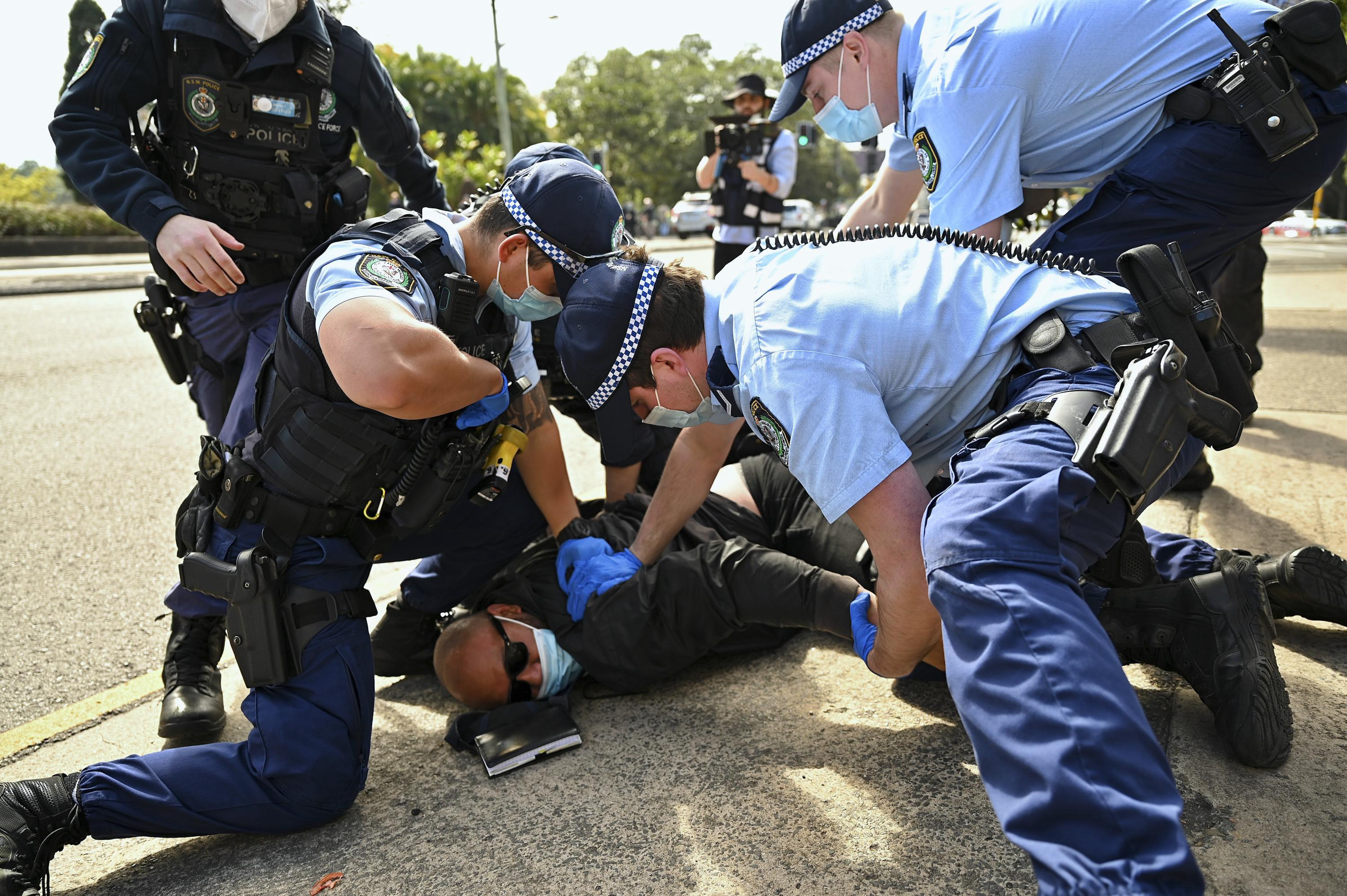
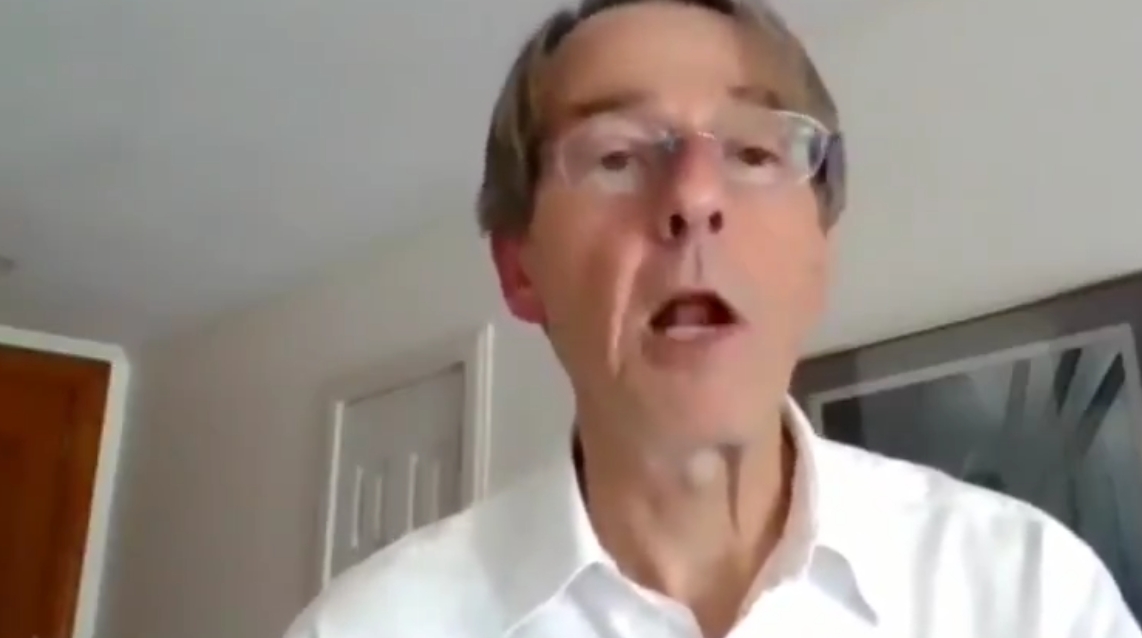
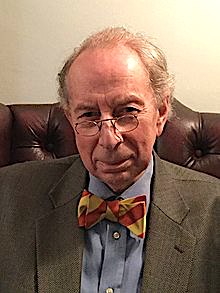

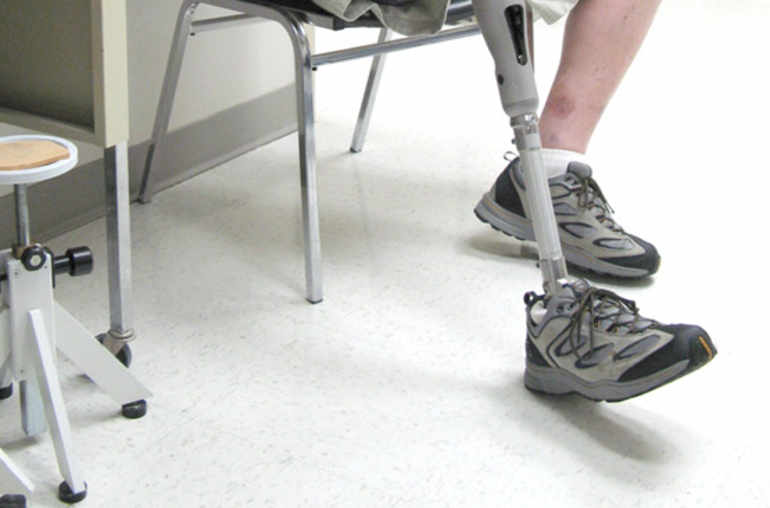
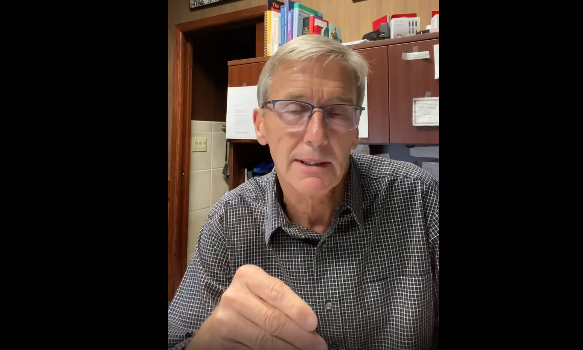
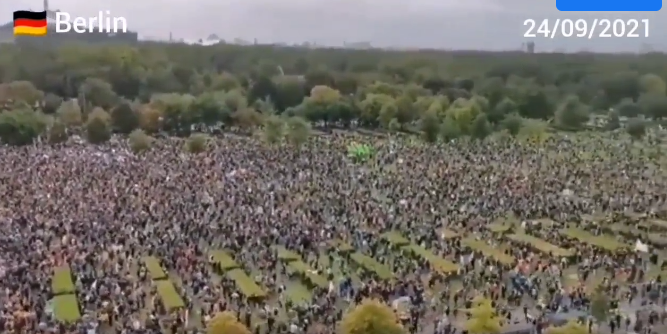
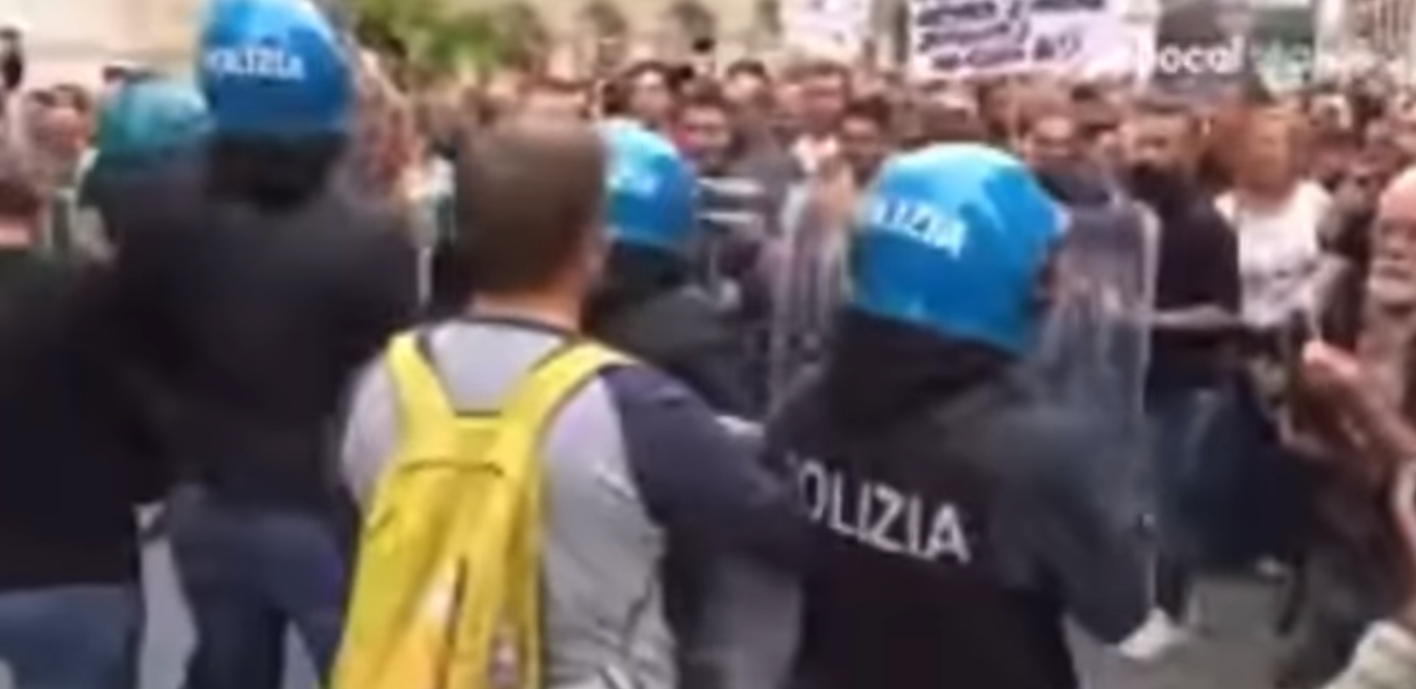
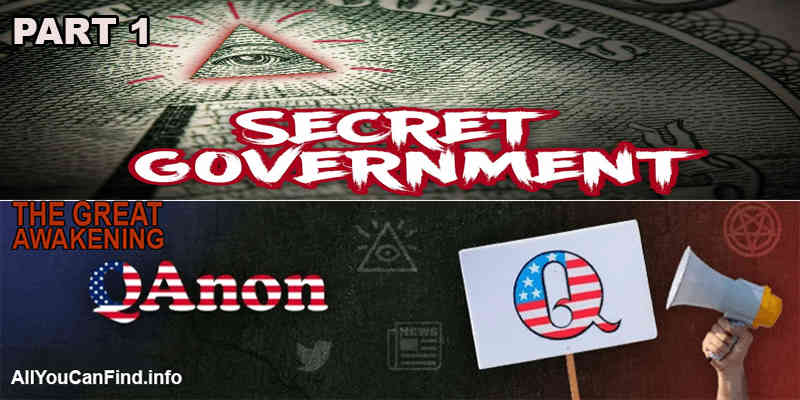
.jpg)
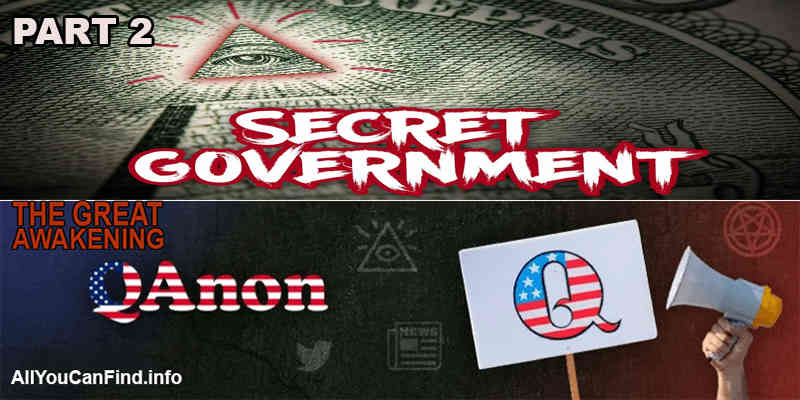
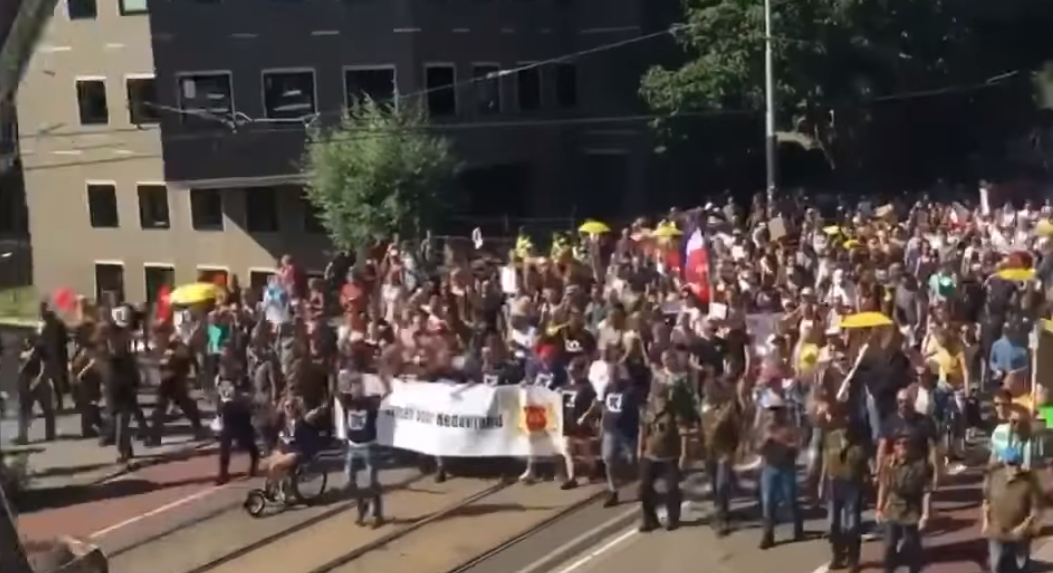
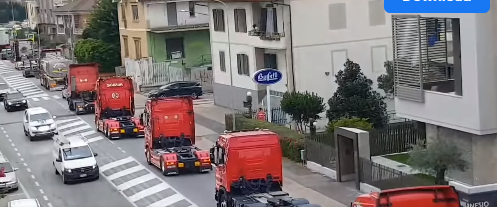
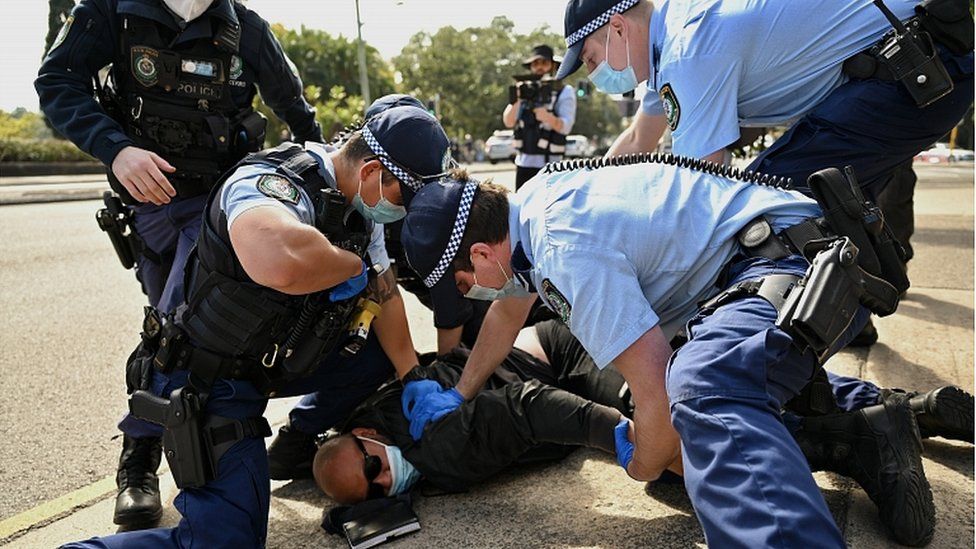
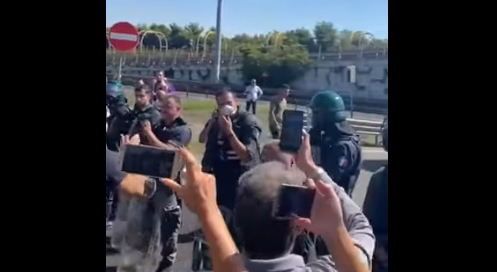

 English (US) ·
English (US) ·  French (CA) ·
French (CA) ·